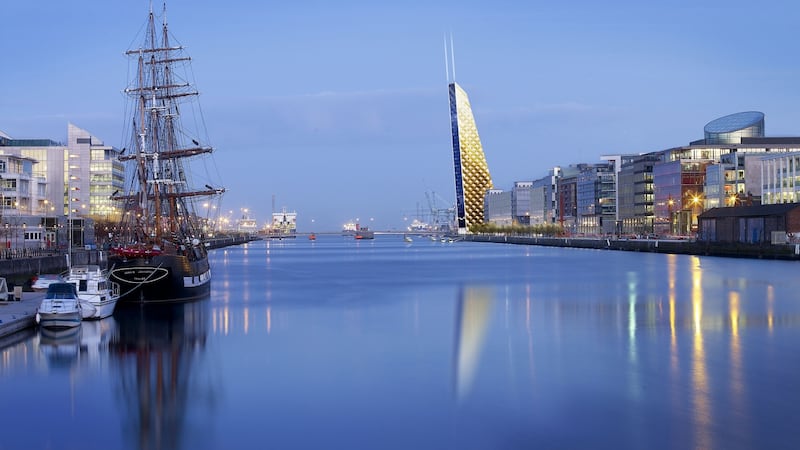Photomontages, often used artfully by developers to indicate how easily their project will slot into the surrounding landscape, cannot be deployed to that effect for developer Johnny Ronan’s proposed Tara Street skyscraper.
There is no hiding this one – it’s a biggie. The 88m, 22-storey glass tower dwarfs everything around it. Even Liberty Hall on the opposite bank of the River Liffey doesn’t come near to touching it in the skyline.

Its appearance will come as a shock to many, and an outrage to some, but it should not be a surprise.
This site has been earmarked for high-rise development for more than a decade. It is one of just four areas in the capital, along with the docklands and Connolly and Heuston stations, where buildings of heights above 50m, which equates to about 12 storeys of offices or 16 storeys of apartments, are permitted by Dublin City Council.
But the rules governing this particular site are even more specific. The George’s Quay local area plan, approved by the council in 2012, was devised to govern the creation of a new “midtown” for the city south of the Liffey to Pearse Street, and from Hawkins Street to Lombard Street.
The council has long sought to establish a development template for the area, which despite being close to the heart of the city has a large percentage of vacant and under-utilised sites as well as more than its fair share of 1960s buildings which have had their day, Hawkins House being the obvious example.
Under the local area plan, the maximum allowable height for Ronan’s site is 88m, meaning that Ronan is going for broke with his proposed skyscraper.
It is unlikely that he will secure the full height. Of the four high-rise areas designated under the city development plan, George’s Quay was always the most controversial pick, being smack bang in the centre of the city, with the other locations, particularly Heuston and the docklands, having more peripheral or “gateway” status.

And despite the council having spent more than five years devising the George’s Quay plan (its first draft was published in 2008 but went into abeyance during the bust), which sets out specific development standards for each site in the area, planners have been ginger in its implementation.
Last year the council received applications to demolish and replace two of the city’s most loathed buildings. The Office of Public Works last June sought permission to demolish the 12-storey Hawkins House and replace it with 10 storeys, although because floor to ceiling heights have become more generous since the 1960s, the new building would be a similar height of about 40m.
At the same time Nama-appointed receivers to the neighbouring Apollo House, sought permission to go from 10 to 12 storeys, or from about 35m to 48m.
These were the first major applications made under the local area plan, and under the height provisions for the site, eight building could have been 48m. But in the case of both, the planners sought height reductions, and for Apollo House in particular cited the “sensitive conservation areas in the city”, particularly as viewed from College Park in Trinity College and from the Custom House.
These were issues one would have expected to have been considered when the maximum heights were set in the 2012 plan. However, developers reduced their heights and permissions were granted by the council, though they are now under appeal to An Bord Pleanála.
It is the city’s east end where the big beasts are emerging from the rubble of the bust. At Sir John Rogerson’s Quay, Kennedy Wilson is building Capital Dock, including a 23-storey apartment tower rising to 79m. This will, for a while at least, be the tallest building in the city, and the highest built since 2010 when the 67m Montevetro, now the Google Docks block, was built.
Directly across from the Kennedy Wilson apartments, construction is shortly to start on the Nama-funded Exo building, in relation to which estate agents Savills sent a helpful reminder this week pointing out that at 73m it would be the tallest office block in the city.
Both of these skyscrapers are a bit on the short side. Either could, under the council’s planning rules, have been 88m – the height being sought at Tara Street.
Both are also squat in comparison to what was planned for the area. The Exo is going on the site of Harry Crosbie’s “Watchtower”, which at 120m would have been the same height as the Spire in O’Connell Street, while on the other side of the river the U2 Tower was to have been 130m. And in that light, Ronan’s proposal seems modest indeed.










